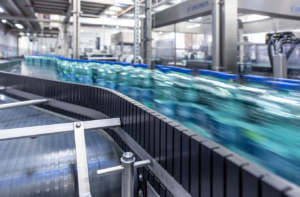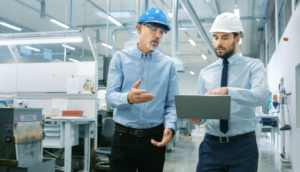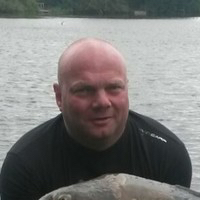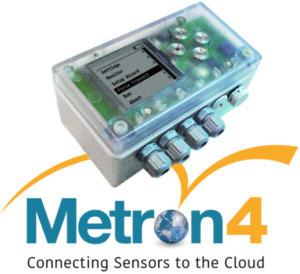All industries require access to reliable, uninterrupted power as well as robust dependable contingency measures to fall back on in the event of a failure. Yet despite the importance placed on maintaining the supply of energy, Siemens says UK manufacturers are failing to recognise the risks posed by critical ageing electrical energy assets. Manufacturers are being cautioned: more needs to be done to strengthen energy resilience plans if the challenges of tomorrow are to be met.
“Critical electrical power equipment, which has accumulated over decades, forms a significant backbone of today’s manufacturing industry. Either housed in a single location or clustered across multiple sites, a complex patchwork of modern and legacy technologies makes up the electrical systems powering UK manufacturing. Interspersed throughout the country, these engineering assets have been added to, adapted, maintained and repaired or replaced over time; all are at various stages and states of health in a sprawling complicated picture of electrical systems,” says Toby Horne, senior lead for Siemens Energy Resilience – a multi-discipline practice in the UK with a remit to help businesses formulate a more strategic, comprehensive and innovative approach to energy resilience and modern power systems.
Continues Horne: “These systems are supplying energy to, in almost all cases, mission critical operations but years of reactive maintenance, planned or emergency repairs and differing or inconsistent service practices have made it near impossible, for a significant proportion of businesses, to accurately gauge how these electrical assets are actually shaping up. Many are not aware of whether their systems can handle even greater demands, others are simultaneously grappling with an energy transition that is adding supply diversification, on-site energy production and decarbonisation targets to their sites – posing additional risks, more points of failure and ever more pressure.”
Siemens is advocating a smarter, more sustainable way to manage energy resilience which will provide better insulation against the dangers of blackouts, the complete interruption of power that halts operations and brownouts, partial or temporary reduction in system capacity. Branded – Resilience-as-a-Service – the ‘vital signs’ of a business’ electrical estate are scrutinised from every conceivable angle. The multi-pronged approach comprises three programmes: Risk Identification, Risk Management and Efficient Issue Resolution; designed to boost operational efficiency, business performance and minimise risk over the long term.
On how businesses can build more energy resilience into their critical power infrastructure, Horne says: “A lack of visibility makes it difficult to see and understand the level of risk within your power infrastructure, but the outcome of downtime is severe – interruption to operations, damage to reputation, unforeseen costs accrued (in fines or revenues) or even a risk-to-life – requiring a more a proactive stance, instead of the conventional view through a maintenance-lens. Risk can never be eliminated but the right resilience strategy, supported by a knowledgeable and trusted partner, can manage and mitigate the threats.”
During the risk identification process, Siemens experts will perform a thorough audit to identify the risks associated with all the installed electrical equipment at the manufacturer. The process will help identify risks more intelligently, manage electrical equipment across sites and accommodate changing energy supplies including green energy, decarbonisation and on-site generation and storage. Risk Management involves the proactive management of electrical assets and maintenance of its health to mitigate risk, streamlining the electrical infrastructure estate for simpler, more cost-effective management over time. While Efficient Issue Resolution grants access to global parts sourcing and world-leading capabilities to help resolve issues faster, repair assets on site and understand the optimum pathways for the power estate.
Horne says: “The prospect of imminent power infrastructure failure is ‘real’. There are approximately 65,000 panels of Siemens Reyrolle brand switchgear installed in UK industries, of which 70% predate the 1970’s. All continue to underpin critical power systems and remain fully supported by Siemens. There are also, as many, other similarly-aged assets from different manufacturers and, if not maintained correctly, all could potentially fail and create challenges.”
Horne adds: “It could mean a food producer’s line losing power which causes wastage and a drop in quality during a production run or an automotive manufacturer experiencing an unplanned blackout that incurs a 30-mins complete line restart; placing pressure on targets. We’ve had a business with £100k a year lost production through a handful of unplanned blackouts. After review, we recommended a £50k part change to remedy the issue – a solution, which in under six months had paid for itself.”
An issue of strategic importance, Horne says energy resilience merits discussion in the boardroom: “Manufacturing is one of the most energy-intensive industries. Any power outages or pricing fluctuations can have significant ramifications on day-to-day operations and production output. The cost to businesses can be eye-watering when you consider ‘3% of all working days are lost in manufacturing through machine downtime, which costs UK business £180 billion each year.’ There is an impression that many are sleepwalking into potential danger, not wholly aware of the risks. A resilience strategy helps to save time, stress and strain. UK manufacturers must embrace the concept and make it their own personal responsibility to prepare for the energy challenges of today and tomorrow.”
 Instrumentation Monthly Test | Measurement | Control
Instrumentation Monthly Test | Measurement | Control




 Carl Whitfield, Selwood Electrical Asset & Support Manager explained: “We’ve been installing Powelectrics kit for a few years. Its reliable, robust and great value.
Carl Whitfield, Selwood Electrical Asset & Support Manager explained: “We’ve been installing Powelectrics kit for a few years. Its reliable, robust and great value. Dominic McCann, CRT Senior Building Surveyor added: “Having the
Dominic McCann, CRT Senior Building Surveyor added: “Having the 






